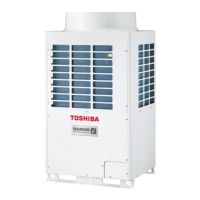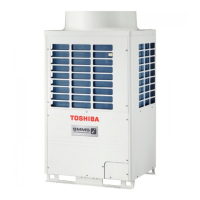What does error E16 mean on my Toshiba Heat Pump?
- SSusan MeyerAug 13, 2025
If your Toshiba Heat Pump displays error code E16, this indicates either a capacity overload (00) or an issue with the number of connected units (01~).

What does error E16 mean on my Toshiba Heat Pump?
If your Toshiba Heat Pump displays error code E16, this indicates either a capacity overload (00) or an issue with the number of connected units (01~).
What does error E20 mean on a Toshiba Heat Pump?
Error code E20 on your Toshiba Heat Pump indicates that another line is connected during automatic addressing. This could mean either another outdoor line (01) or another indoor line (02) is connected.
What does error E19 mean on my Toshiba Heat Pump?
Error code E19 on your Toshiba Heat Pump indicates an issue with the header outdoor units. Specifically, it could mean that there is no header unit (00) or that there are two or more header units (02).
What does it mean if my Toshiba Heat Pump shows error code E06?
If you see error code E06 on your Toshiba Heat Pump, it indicates a decrease in the number of indoor units that are normally received.
What does error code E23 mean for a Toshiba Heat Pump?
If your Toshiba Heat Pump is showing error code E23, it indicates a sending error between the outdoor units during communication.
What does it mean when my Toshiba Heat Pump displays error code E25?
If your Toshiba Heat Pump displays error code E25, it means there is a duplicated follower outdoor address setup.
What does error code E26 signify on a Toshiba Heat Pump?
If your Toshiba Heat Pump shows error code E26, it indicates a decrease in the number of outdoor units that are normally received.
What does error E28 mean on my Toshiba Heat Pump?
If your Toshiba Heat Pump displays error code E28, it indicates an error with the follower outdoor unit. The error code will show the detected outdoor unit number.
| Cooling Capacity | 8.0 kW |
|---|---|
| Heating Capacity | 9.0 kW |
| Refrigerant | R32 |
| Power Source | Electric |
| Energy Efficiency Ratio (Heating) | 3.61 |
| Power Supply | 220-240 V, 50 Hz |
Explains the meaning of WARNING and CAUTION symbols used in the manual.
Details power supply requirements and specifications for outdoor units.
Provides diagrams illustrating the electrical wiring layout for the system.
Guides on control wiring methods, including specifications for cables.
Lists the types, sizes, and specifications for control cables used.
Specifies power supply requirements for combined outdoor unit configurations.
Covers indoor unit power supply and setup for group operation via remote controller.
Step-by-step instructions for connecting power supply and control cables to the outdoor unit.
Explains the process for automatically setting indoor unit addresses.
Details how to manually set indoor unit addresses using the wired remote controller.
Procedure to verify the assigned address and location of indoor units.
Procedure to check the position and address of indoor units.
Instructions for modifying the indoor unit address from the wired remote controller.
Procedure to change all indoor unit addresses from an arbitrary wired remote controller.
Clears addresses individually using the wired remote controller.
Clears indoor addresses from the outdoor unit interface.
Essential checks to perform before starting the unit's test operation.
Step-by-step guide for conducting test operation using the wired remote controller.
Instructions for performing test operations using switches on the header outdoor unit P.C. board.
Explains diagnostic codes displayed on the outdoor unit's 7-segment display.
Lists specific outdoor unit error codes, auxiliary codes, and their meanings.
Details room volume, ventilation, and gas leak detector requirements for safe operation.












